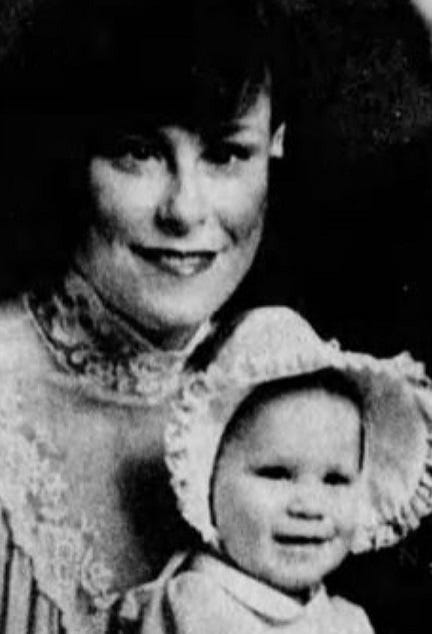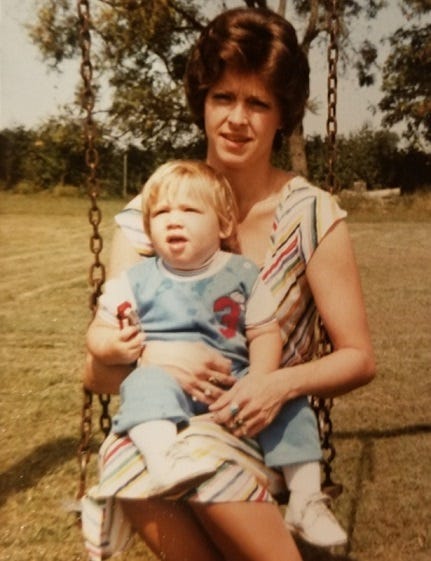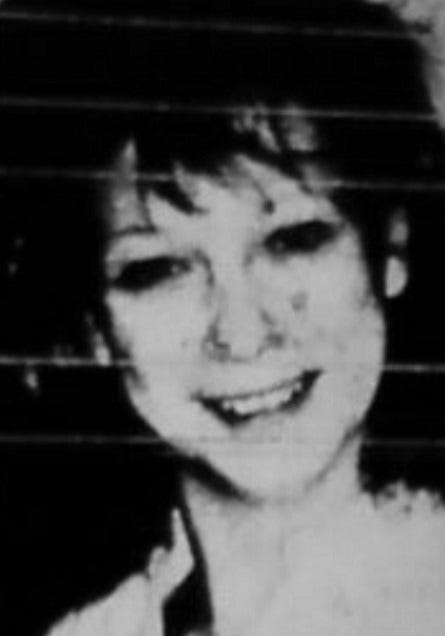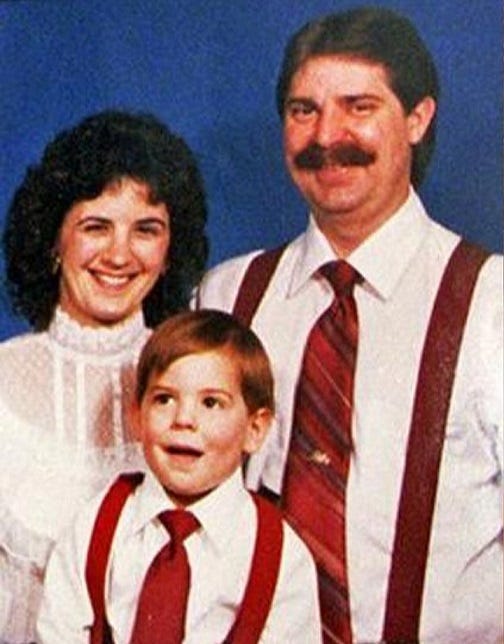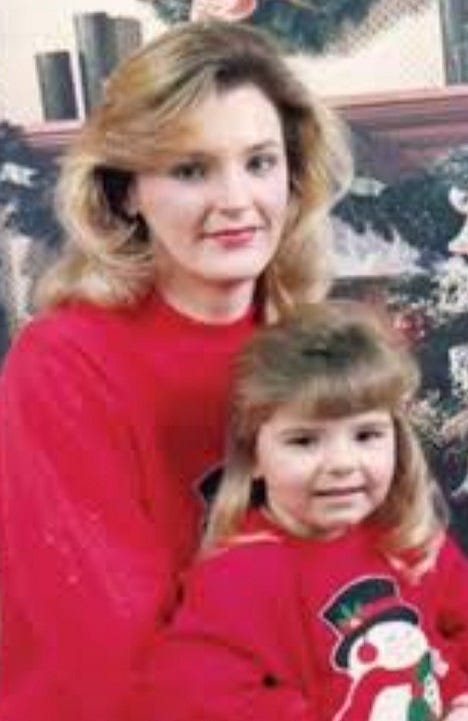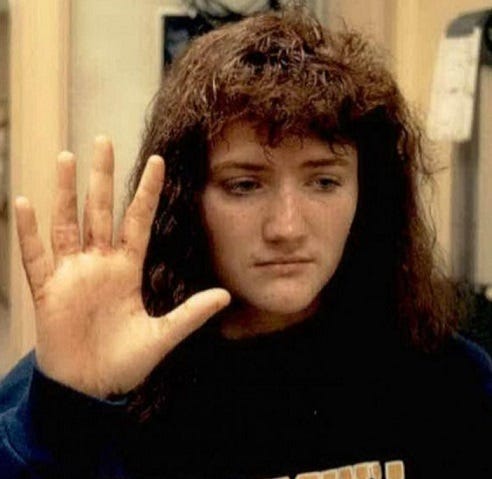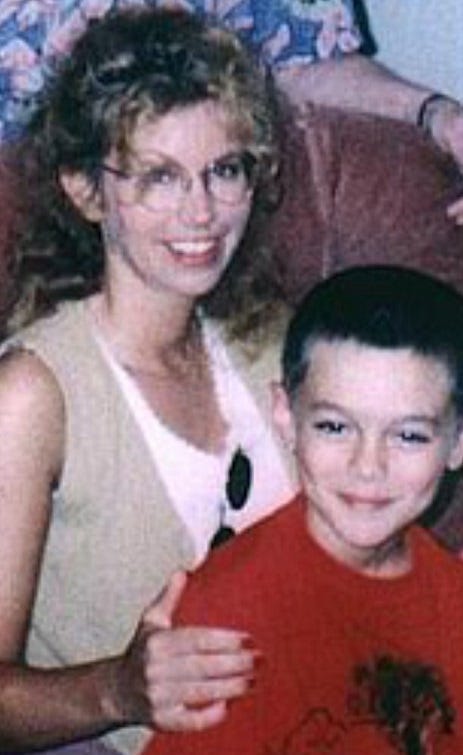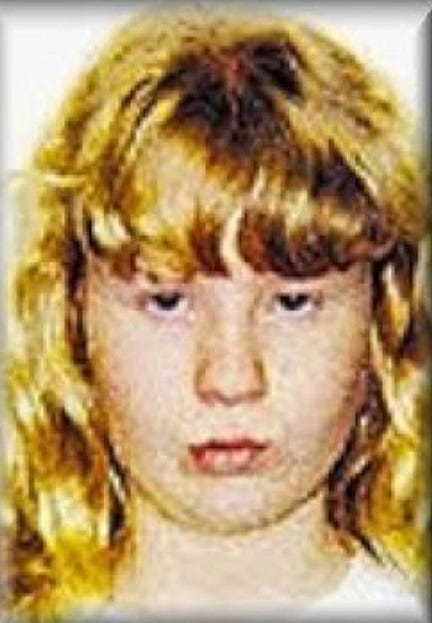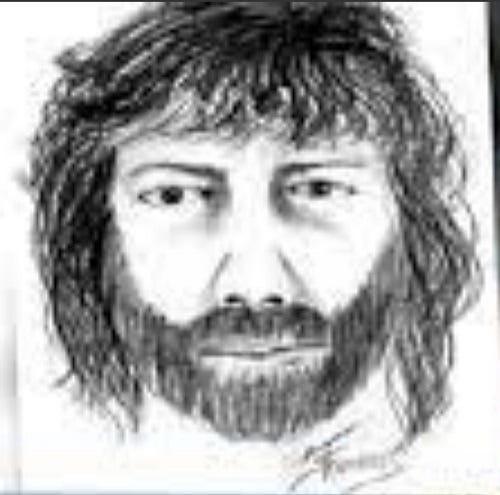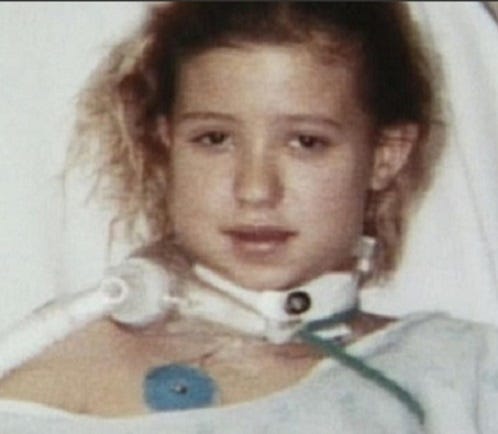The Boogeyman: The Horrific Crimes of Sexual Sadist and Notorious Serial Killer Tommy Lynn Sells
The Lost Cause
Tales of a boogeyman who terrorizes children in the hours from dusk till dawn are as old as time. As legend has it, he is an entity that exists everywhere and nowhere all at once. He is whatever scares you the most, whether it be a demon or a rabid animal waiting to attack. In the vast majority of cases, he is a fantasy that lives only in our psyche. On rare occasions, however, he is terrifyingly real, as you will soon see.
One such nightmarish monster was a drifter named Tommy Lynn Sells, whose lengthy cross-country crime spree left dozens of victims in its wake. Calculating and merciless by nature, no one was safe when he was on the prowl. For this particular boogeyman in the flesh, the more helpless the prey, the better.
Sells was born on June 28, 1964, in Oakland, California to a single mother who already had four children she couldn’t handle. In order to lighten her load, the new arrival was sent to live with his Aunt Bonnie in Walpole, Missouri.
When he was five, Bonnie asked her sister if she could adopt the boy whom she loved like one of her own. Rather than giving him a chance at life, his mother had balked. Enraged by the request, she had demanded that the son she barely knew be returned to her at once. And with that, Sells’ chances of becoming a productive citizen were forever dashed.
Finding himself in a toxic environment courtesy of his birth mother, Sells rebelled at a young age. By the time he turned seven, he had already become a full-fledged alcoholic. At the age of eight, a family friend began molesting him on a regular basis. He would later say that he was certain his mother knew what was happening but hadn’t cared enough to put a stop to the abuse. Years down the line, when his horrific crimes came to light, he would claim that his uncontrollable need to hurt others stemmed from the molestation and his mother’s indifference.
At the age of fourteen, Sells had run away from home, vowing never to return. He broke that promise three years later when he made an impromptu visit to the family home. His pent-up hostilities towards his mother boiling over, he had attempted to sexually assault the woman he blamed for ruining his life.
Fueled by her lifelong disdain of the child she never wanted, she had physically thrown him out of the house, telling him that she hoped she never laid eyes on him again. The next time she saw his face was on the six o’clock news.
A Life of Crime
On July 5, 1979, thirty-nine-year-old John Cade was shot dead during a home invasion in Mississippi. While the perpetrator was never caught, a description of a young man witnesses observed running from the scene matched that of Tommy Lynn Sells. Although his presence in the area at the time of the murder had made him a strong suspect, he had been allowed to go free due to a lack of evidence.
Sells’ first known arrest occurred in the early months of 1982 when he was picked up for public intoxication. After spending a night in the drunk tank, he was released with a warning that he was headed down a dangerous path and needed to shape up before he reached the point of no return. These words of wisdom had gone in one ear and out the other. The headstrong teenager knew exactly where he was going and couldn’t get there fast enough.
Refusing to be tied to any one area. Sells drifted from state to state for much of his adult life, committing any number of crimes along the way. With no skills to speak of, he had performed odd jobs here and there in order to buy food and personal items.
While still in his teens, Sells became addicted to street drugs. His habit would land him in prison multiple times in the coming years. Fortunately for him, his sentences were always short, allowing him to pick up where he left off in no time at all.
The Victims
One of the first of the many rapes and murders that have been attributed to Sells took place on April 27, 1982, in St. Louis, Missouri when JoAnne Clenney Tate, age thirty-five, was brutally slain in her home. The perpetrator had then sexually assaulted a seven-year-old girl named Melissa, who was also present in the residence. After brutalizing the youngster, he had fled the scene, leaving her bruised and bloodied, but still very much alive.
The traumatized child had initially identified the attacker as JoAnne’s former boyfriend, Rodney Lincoln. On the strength of her testimony, he was convicted of the murder and rape, despite his steadfast denials that he had been anywhere near the residence on the night in question.
Decades later, upon seeing a photo of Tommy Lynn Sells, Melissa realized that he had been the guilty party all along. Though she recanted her identification of Lincoln, his conviction stood. He would serve thirty-six years in prison before finally being released.
On July 31, 1983, Colleen Gill, thirty-three, and her four-year-old daughter Tiffany, were beaten to death in their home in St. Louis. A man seen running from the scene had fit Sells’ description to a T. Even though it was determined that he had been staying nearby at the time, with no physical evidence linking him to the murders, no charges were filed against him.
After temporarily dropping off the radar, Sells struck again on July 26, 1985, this time in the city of Springfield, Missouri. It was there that he met twenty-eight-year-old Ena Cordt and her four-year-old son Rory while working for a traveling carnival.
The way Sells remembered it, he and Ena had engaged in consensual sex that evening while the little boy slept. Sometime during the night, he claimed to have awakened to find the young mother rifling through his napsack. Believing that she was trying to steal his meager earnings, he had beaten her to death with a baseball bat. Fearing that little Rory could identify him, he had then done the same to the toddler. By the time that the bodies were discovered a week later, the carnival had moved on, taking the killer with it.
In May of 1987, twenty-seven-year-old Suzanne Korcz vanished after leaving a nightclub in Lockport, New York, not far from Niagara Falls. Her body was found eight years later, less than two miles from where she went missing. In 2004, Sells — who had been seen in Lockport around the time of her disappearance — confessed to her murder.
Five months after Suzanne’s disappearance, another young woman, twenty-one-year-old Stefanie Kelly Stroh, went missing from a truck stop in Lovelock, Nevada. Long after the fact, Sells admitted that he had picked her up as she was hitchhiking to Reno. Once he had her in the car, he had strangled her to death before dumping her remains in one of the many hot springs that populate the state. Her body has never been found.
His appetite for murder apparently insatiable, on November 17, 1987, Sells had committed what would prove to be his most heinous murders to date. As was his habit, he had taken advantage of the kindness of strangers who had only wanted to do the right thing by their fellow man.
On that fateful day, Sells had been hitchhiking through Ina, Illinois when Keith Dardeen, twenty-nine, made the mistake of offering him a ride. A friendly sort who never met a stranger, Keith had invited the filthy vagabond to his family’s home for a hot meal. Never one to pass up a golden opportunity to do wrong, Sells had readily accepted.
They had barely made it through the door before Sells pulled out a handgun and shot Keith Dardeen in the back of the head. Not quite satisfied just yet, he had fired a second shot into his charitable host before cutting off his penis with a boning knife.
When Keith’s heavily pregnant wife Elaine came upon the ghastly scene only moments later, Sells had marched her into the bedroom and ordered her to lie down. After binding her to the bedposts, he had bludgeoned her three-year-old son Peter to death with a baseball bat.
When he was finished, he had turned his attention back to a visibly terrified Elaine. As he began beating her with the bat, the trauma had caused her to go into premature labor. As her own life was ebbing away, she delivered the baby girl who would have made their family complete.
The newborn, who her parents had already named Casey, was alive and breathing on her own, but not for long. Though the infant posed no threat whatsoever to Sells, he had beaten her to death in the same manner as her mother and brother.
Before departing, the ruthless killer had sexually assaulted Elaine with the baseball bat, leaving the implement protruding from inside her, purely for shock value. Those who had the misfortune of viewing the carnage were convinced that the Dardeens had spent the last moments of their lives in the presence of unadulterated evil.
Sells is believed to have struck again a little over a year later. This time, he had attacked fifty-one-year-old Kent Alan Lauten, a homeless man he had befriended at an encampment in Tucson, Arizona. The victim’s body, which had borne multiple stab wounds, was discovered two days after he was last seen.
In 1990, Sells was finally arrested — not for rape or murder — but for stealing a truck. After being found guilty of the property crime, he was sent to prison for a term of sixteen months.
During his incarceration, he was ordered to undergo psychiatric testing in an attempt to get to the bottom of his worsening anti-social behavior. Upon reviewing the results, the prison psychiatrist had diagnosed him with a variety of mental illnesses, including bipolar disorder, clinical depression, and borderline personality disorder.
Despite his obvious need for some sort of therapeutic intervention, these ominous findings were filed away and all but forgotten. Though it had been established that Sells was a powder keg waiting to explode, he was released upon completion of his sentence with no provisions put in place to manage his mental health. A free man once again, he had hit the road in search of his own brand of therapy.
On December 9, 1991, a Florida woman and her young daughter were killed during a home invasion. Autopsies revealed that twenty-five-year-old Teresa Hall and five-year-old Tiffany had both died from blunt force trauma to the head.
An investigation into the murders found that the perpetrator had gained entry to the house by kicking in the front door. Once inside, he had demolished a heavy wooden table and used the legs to beat the life out of the helpless occupants.
On May 13, 1992, a nineteen-year-old woman in Charleston, West Virginia named Fabienne Witherspoon had spotted a man standing near a highway overpass holding a sign that read “Will Work for Food.” Sympathizing with the bedraggled vagrant’s plight, she had pulled over and offered to take him to her place and pack him a nice lunch.
Believing that it was her Christian duty to help out someone in need, it hadn’t dawned on her at the time that she may have been putting herself in harm’s way. She would find out soon enough that no good deed goes unpunished.
When they arrived at her apartment, Fabienne had told the man to wait on the stoop while she went inside and prepared a to-go bag. She had then retreated to the kitchen, closing the door behind her.
As she was busy making his sandwiches, Fabienne had turned around to see that the man was now standing in the living room watching her every move. Though his presence had made her feel a bit uneasy, the fear hadn’t set in just yet. Rather than acknowledging him, she had continued fixing his lunch as if nothing was wrong.
The next thing she knew, the man had rushed towards her, grabbing a knife from the countertop along the way. Realizing instantly that she was in trouble, she had made a mad dash for the bathroom.
The man, who was later identified as Tommy Lynn Sells, had chased her down and attempted to rape her on the bathroom floor. In her desperation, Fabienne had smashed her attacker over the head with a ceramic duck that sat atop the toilet tank.
The blow had been so forceful that it had thrown Sells off balance, causing him to drop the knife. Seizing on the opportunity, Fabienne had scrambled to grab the weapon before he could retrieve it. Fully aware that she was in the fight of her life, she had stabbed wildly at her attacker, hitting him several times in the midsection.
Stunned by the unexpected turn of events, Sells had struck Fabienne over the head with a stool. He had then staggered out the door and headed to the nearest emergency room.
Fabienne, who had suffered head trauma as well as numerous defensive wounds to her hands, had immediately phoned 911. The responding officers had taken down her incredible account while they waited for paramedics to arrive.
Sells, who had sustained penetrating wounds to his liver and kidneys, was confined to the Intensive Care Unit for several days. As a precaution, an armed guard was stationed outside his door for the duration of his stay.
When he was well enough to be released, Sells was taken into custody for the attack on Fabienne. When the case went to court, he claimed that he had simply been waiting for a sandwich when she jumped him for no reason.
As the legal wrangling wore on, Sells agreed to plead guilty to malicious wounding in exchange for a sentence of two to ten years behind bars. While in prison, he began corresponding with a woman from Tennessee named Nora Price. Proving that there is someone for everyone, the unlikely pair had fallen in love and gotten married.
Upon Sells’ release in 1997, the happy couple had settled in Nora’s home state, but the union didn’t last long. Incapable of caring for others in a meaningful way, the groom’s indifference had caused the relationship to sour.
Within months of the nuptials, Sells was back on the road and more dangerous than ever. After Fabienne had unexpectedly turned the tables on him, he decided that he would make sure to choose his victims more carefully in the future. A coward through and through, the experience had taught him a valuable lesson, namely that although he enjoyed hurting others, he didn’t like being on the receiving end.
On the night of October 13, 1997, ten-year-old Joel Kirkpatrick was stabbed to death in his bedroom in Lawrenceville, Illinois. His mother, Julie Rea Harper, who had been jolted awake by her son’s cries, had run to his aid. She later told police that she had fought with the attacker, who had fled the residence on foot.
According to Harper, her son’s killer had worn a ski mask that had obscured his face. Investigators determined that the murder weapon was a steak knife that was missing from a butcher block in the kitchen. With no signs of an intruder to be found, detectives questioned Julie’s version of events.
After putting their heads together and concluding that Julie wasn’t the grief-stricken mother she made herself out to be, authorities charged her with Joel’s murder. After weighing the evidence put before them, a jury found her guilty as charged and recommended that she spend the rest of her life in prison.
Nine years later, Sells would tell investigators in Texas that he had stalked a woman and her young son after running into them at a grocery store in Illinois. He recalled that he had decided to follow them home after the mother was rude to him, drawing his ire. After loitering outside until he was sure they had turned in for the night, he had broken into the house.
After finding a kitchen knife that perfectly suited his needs, he had snuck into the boy’s bedroom and stabbed him repeatedly. When the woman burst into the room and started attacking him, a struggle had ensued. Wrongly assuming that the police were on their way, he had broken free and made a run for it.
The details of his story had so closely matched the murder of Joel Kirkpatrick that Julie’s conviction was ultimately overturned, and she was freed from custody.
On October 15, 1997, the body of thirteen-year-old Stephanie Mahaney was discovered floating in a pond in Springfield, Missouri, which happened to be one of Sells’ favorite stomping grounds. He would later confess to having taken her from her bed as her family slept. He had then drugged and raped the teen before strangling her to death and dumping her body in the shallow water.
Two months later, nineteen-year-old Yvette Sophia Mueller went missing from an RV Park in Las Vegas. Sells would subsequently confess to kidnapping, raping, murdering and dismembering a young woman fitting her description and dumping the remains near the Snake River. Since her body was never found, she is still listed today as a missing person, despite the claims of her alleged killer.
A forty-year-old carnival worker named Thomas Brose was found shot to death in his caravan on April 1, 1998. Witnesses who were acquainted with both men came forward to say that they had seen the victim in the company of Tommy Lynn Sells on what turned out to be the last day of his life.
In April of 1999, thirty-one-year-old Debra Harris, was raped and stabbed to death in her Gibson, Tennessee home. Her eight-year-old daughter Ambria Halliburton, who witnessed the attack, was also killed.
Less than two weeks after the double homicide in Gibson, nine-year-old Mary Beatrice Perez was snatched in broad daylight from an outdoor music festival in San Antonio, Texas after getting separated from her parents. Her brutalized body was found discarded in a creek bed ten days later. The little girl had been raped before being strangled with her own shirt.
The next name to be added to the long list of suspected victims of Tommy Lynn Sells was that of Haley McHone, thirteen, who was kidnapped from a playground in Lexington, Kentucky on May 23, 1999. Her remains were found dumped in a wooded area ten days later. Much like Mary Beatrice Perez, she had been sexually assaulted and strangled to death with the shirt she was wearing that day.
Two months later, on July 5, fourteen-year-old Bobbie Lyn Wofford accepted a ride home from a convenience store in Kingfisher, Oklahoma from a bearded stranger. Her killer would later confess that he had taken her to a remote area where he had beaten and raped her. When she tried to flee, he had chased her down and struck her with a hatchet before shooting her, execution-style, in the head.
Sells’ luck would finally run out on December 31, 1999, in the Texas border town of Del Rio. In the days leading up to the heinous acts that would be his undoing, he had weaseled his way into the good graces of the parents of thirteen-year-old Katy Harris after meeting them at a community church event. Upon learning that he was having marital difficulties — being the good people they were — Terry and Crystal Harris had invited him to their home for counseling. They couldn’t know that their act of kindness would be repaid with more heartache than they ever thought possible.
On New Year’s Eve, knowing that Terry was out of town, Sells had broken into the family’s trailer. As Katy and her ten-year-old friend Krystal Surles were sleeping soundly in their bunk beds, Sells had crept into their room and waged a vicious attack upon the teenager.
As he ripped off Katy’s pajamas and attempted to rape her at knifepoint, she managed to wiggle free and make a break for the door. When he caught up to her, an infuriated Sells had slashed her twice across the throat. As she lay on the floor gasping for air, he had stabbed her until she fell silent.
Awakened by the commotion, a petrified Krystal had remained frozen in place. When he approached her, knife in hand, she had begged for her life, promising that she wouldn’t tell anyone what she had seen. Unmoved by her pleas, he had callously sliced her throat from ear to ear.
Believing that both girls were dead, Sells had fled into the night. When she was certain that he was no longer in the room, a critically wounded Krystal — fearful that he was still inside the residence — had run next door for help. Upon seeing the child standing on their porch covered in blood, the neighbors had called police.
When officers arrived on the scene, they found Katy deceased on the bedroom floor. Krystal, however, had miraculously survived the attack. What’s more, in spite of the trauma she had endured, she remembered everything with perfect clarity.
With Krystal’s help, a police sketch artist was able to create a composite drawing of the perpetrator. After taking one look at the face of the man who had killed their daughter, the Harris’ identified the culprit as a used car salesman with a troubled marriage named Tommy Lynn Sells.
When he was apprehended two days later, Sells had freely admitted to murdering Katy and he didn’t stop there. Once the floodgates were open, he would admit to having committed dozens of rapes and unsolved homicides spanning several states.
Even though he had taken credit for killings from one end of the country to the other, for reasons known only to him, he denied harming Krystal. Perhaps he couldn’t admit to cutting the throat of a child who, though no bigger than a minute, had put an end to his killing spree once and for all.
His murderous ways prompted some members of the press to dub him the “Coast-to-Coast Killer.” Others referred to him as the “Family Annihilator,” owing to his penchant for killing women and children during home invasions.
Justice is Served
When Sells’ murder trial got underway in September of 2000, a still recovering Krystal had somehow found the strength to testify against her assailant. In a voice that seldom rose above a whisper, she had recounted the events of that terrible night when she had watched her friend being killed, knowing that she would be next.
In addition to Krystal’s eyewitness account of what happened, crime scene investigators had taken the stand to say that Katy’s blood had been found on Sells at the time of his arrest. Likewise, traces of his DNA were recovered from her body, indicating that he had bled on her during the frenzied attack.
Following closing arguments, the jury had deliberated for less than two hours before finding Sells guilty of the crime of capital murder. Though the twelve men and women tasked with determining his fate had no prior knowledge of the defendant’s criminal history, they learned during the penalty phase that he was a suspect in a number of other slayings. Upon weighing all their options, they recommended that he be put to death. The judge agreed, ordering that he die by lethal injection.
Sells’ defense lawyers appealed the verdict on the grounds that jurors had been allowed to see Katy’s autopsy photos. They argued that the grisly images had prejudiced them against their client. In 2003, an appeals court dismissed the motion. His legal options having run their course, the convicted killer would sit on death row at Huntsville Prison for the next fourteen years awaiting his date with destiny.
As his execution day grew near, Sells’ legal team had requested a stay on the grounds that one of the drugs used in the procedure had a high probability of being contaminated, which might cause their client undue suffering. After giving the matter their careful consideration, the United States Supreme Court denied the motion.
On April 3, 2014, Tommy Lynn Sells, age forty-nine, was put to death by the state of Texas for the murder of Kaylene Harris. When asked if he had any last words, he had declined to speak. Several family members of his other victims had witnessed the execution. Krystal Surles, one of only two known survivors, had been on hand that day to make sure that the man who still haunted her nightmares would never harm her, or anyone else, ever again.
Whether the injections were painful or not, which had worried him no end, is unknown. One thing, however, is certain: he received far more humane treatment than his victims, all of whom had died screaming.
The Ways of a Psychopath
Though Tommy Lynn Sells had become what law enforcement officers refer to as a “professional confessor” in the weeks and months after his capture, it’s impossible to know the accuracy of his claims. While some murders, such as that of Joel Kirkpatrick, were considered solved thanks to his confession, others remain in doubt. Even so, it’s estimated that he likely killed upwards of seventy people during the years he spent roaming the highways and byways of the United States.
Authorities suspected that Sells, who would often seek temporary employment at towing companies, had used his position to abduct, rape and ultimately murder stranded motorists, mostly women traveling alone. Since he was the only one who knew of their plight, it would have been easy for him to take them from Point A to Point B without anyone being the wiser. When the drivers in distress were men or large groups that he didn’t think he could handle, he would tow their vehicle and they would all live to see another day.
Sells had made no secret of the fact that he targeted women and children simply because they were less likely to fight back. He boasted that his favorite method of murder was strangulation, since it allowed him to see the fear in the eyes of his victims when they realized that they were going to die. That being said, he would change things up occasionally and resort to bludgeoning his quarry or stabbing them with knives taken from the kitchens of the homes he invaded.
A killer who was as cold-blooded as they come, Sells had once told an interviewer that using a knife to end the life of a human being had come as naturally to him as “peeling an orange or slicing a tomato.”
As for how he gained access to the homes of his victims, he explained that he normally entered through unlocked windows. He would also kick in doors if he was sure that no males were present in the home. Having learned from experience that the element of surprise worked in his favor, he knew that by the time the residents were aware of what was happening, they were powerless to do anything about it.
Like many of his ilk, Sells consistently blamed the victims for their own deaths. He would invariably recall that they had deliberately insulted him, tried to steal from him or committed some other imaginary slight that had driven him to end their lives.
In some instances, fancying himself a vigilante, he claimed that he had killed one party to protect another, usually a child. Bearing in mind that he had willingly admitted to the senseless slaughter of numerous youngsters, including a newborn infant, authorities dismissed this excuse as utter nonsense.
A heartless killer whose hatred for everyone and everything had led him to commit atrocious crimes against the most innocent of victims, Tommy Lynn Sells was the boogeyman come to life. His reign of terror illustrated that the horrifying entities we conjure in our minds are nothing compared to the real-life monsters that walk among us.
Resources:
·abc7chicago.com
·clarkprosecutor.org
·crimelibrary.org
·cbsnews.com
·investigationdiscovery.com
·casetext.com
Images used under provisions of the Fair Use Act for purposes of reporting and education.






